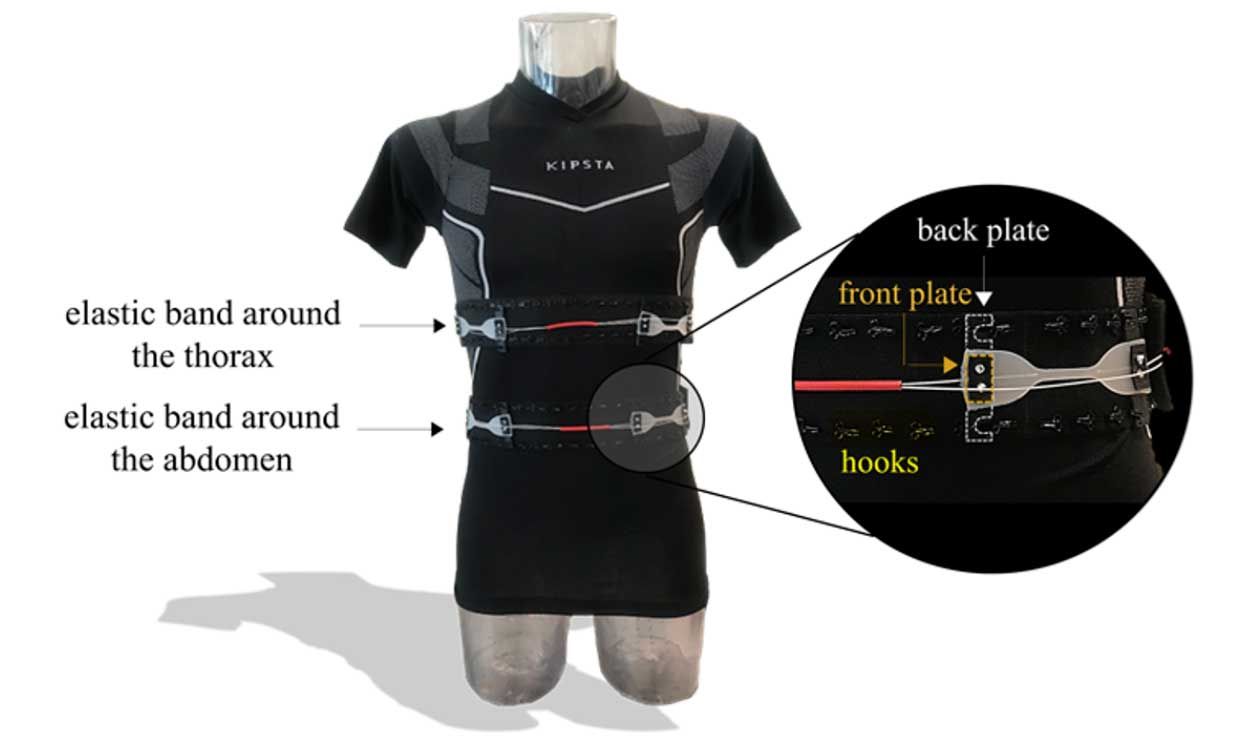Fatigue in the workplace is a serious issue today—leading to accidents, injuries and worse. Some of history’s worst industrial disasters, in fact, can be traced at least in part to worker fatigue, including the 2005 Texas City BP oil refinery explosion and the nuclear accidents at Chernobyl and Three Mile Island.
Given the potential consequences of worker fatigue, scientists have been exploring wearable devices for monitoring workers’ alertness, which correlates with physiological parameters such as heart rate, breathing rate, sweating, and muscle contraction. In a recent study published November 6 in IEEE Sensors Journal, a group of Italian researchers describe a new wearable design that measures the frequency of the user’s breathing—which they argue is a proxy for fatigue. Breathing frequency is also used to identify stressing conditions such as excessive cold, heat, hypoxia, pain, and discomfort.
“This topic is very important since everyday thousands of work-related accidents occur throughout the world, affecting all sectors of the economy,” says Daniela Lo Presti, a PhD student at Università Campus Bio-Medico di Roma, in Rome, Italy, who was involved in the study. “We believe that monitoring workers’ physiological state during [work]… may be crucial to prevent work-related accidents and improve the workers’ quality performances and safety.”

The sensor system that her team designed involves two elastic bands that are worn just below the chest (thorax) and around the abdomen. Each band is flexible, made of a soft silicon matrix and fiber optic technology that conforms well to the user’s chest as he or she breathes.
“These sensors work as optical strain gauges. When the subject inhales, the diaphragm contracts and the stomach inflates, so the flexible sensor that is positioned on the chest is strained,” explains Lo Presti. “Conversely, during the exhalation, the diaphragm expands, the stomach depresses, and the sensor is compressed.”
The sensors were tested on 10 volunteers while they did a variety of movements and activities, ranging from sitting and standing to lateral arm movements and lifting objects from the ground. The results suggest that the flexible sensors are adept at estimating respiratory frequency, providing similar measurements to a flow meter (a standard machine for measuring respiration). The researchers also found that their sensor could be strained by up to 2.5% of its initial length.
Lo Presti says this design has several strengths, including the conformation of the sensor to the user’s body. The silicon matrix is dumbbell shaped, allowing for better adhesion of the sensing component to the band, she says.
However, the sensing system must be plugged into a bulky instrument for processing the fiber optical signals (called an optical interrogator). Lo Presti says other research teams are currently working on making these devices smaller and cheaper. “Once high-performant, smaller interrogators are available, we will translate our technology to a more compact wearable system easily usable in a real working scenario.”
Source: Spectrum










